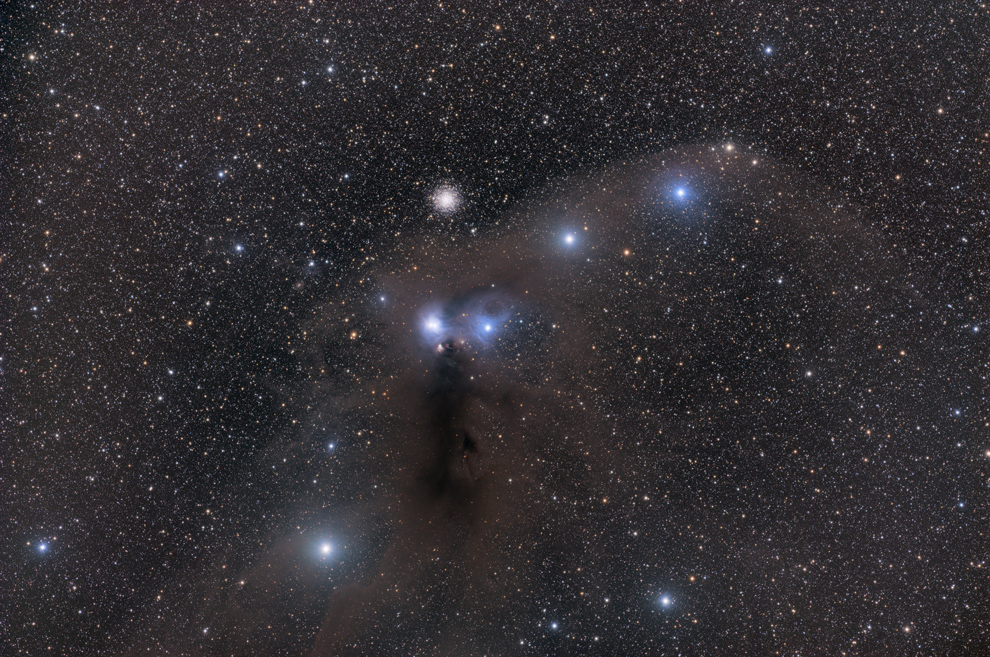
Corona Australis Molecular Cloud: This is a region of gas and dust: The blue nebulous regions (not the
bright blue stars, but the stars with a lot of blue haze around them, and with labels on the labeled version: NGC6726, NGC6727 and IC4812) are dust clouds reflecting the light from bright young blue stars.
Above the center of the photo is a nice globulur star cluster, NGC6723 (this cluster contains hundreds of thousands of very old--like 13 billion years old, three times the age of the earth--stars);
the dark and dusty parts are "dark nebulae," which just means that it's not being excited by nearby stars,
so we detect it only by the way it obscures stars that are behind it. Right in the middle of the photo are three very unusual objects: NGC6729 is a reflection/emission nebula,
both emitting light from particles ionized by a nearby star, and reflecting light from the star; and HH98 and HH101 are "Herbig–Haro objects," which are narrow jets of gas and matter ejected
by young stars at speeds of 60 to 600 miles per second that collide with the surrounding nebula, producing bright shock fronts that glow as the gas is heated by friction while the surrounding
gas is excited by the high-energy radiation of nearby hot stars. These objects are transient phenomena, lasting not more than a few thousand years. Also identified in the photo are two tiny,
faint background galaxies, ESO 396-011 and ESO 396-016. This cloud is estimated to be 400 to 600 light years from us.
Copyright 2013, 2015 Mark de Regt